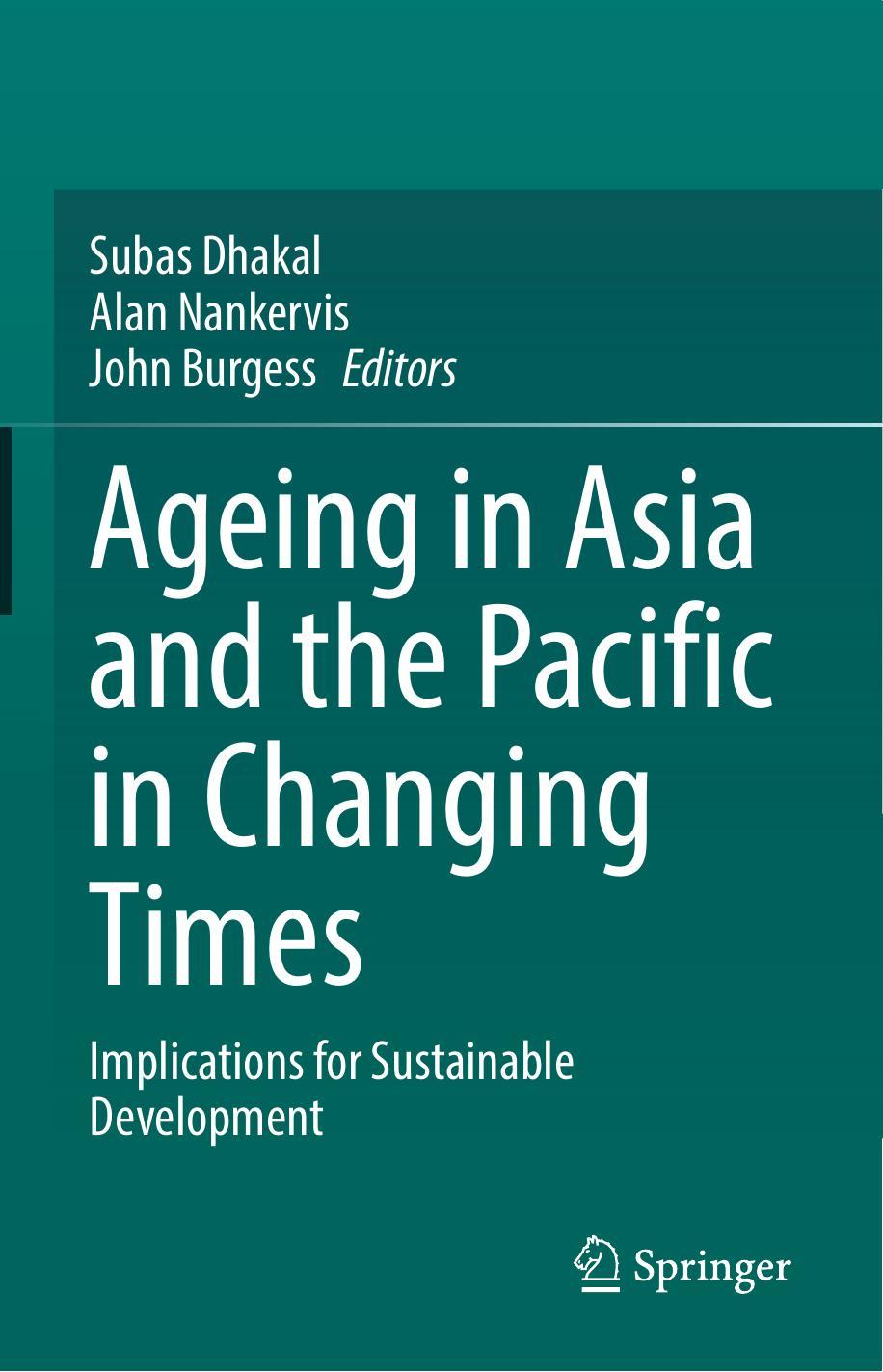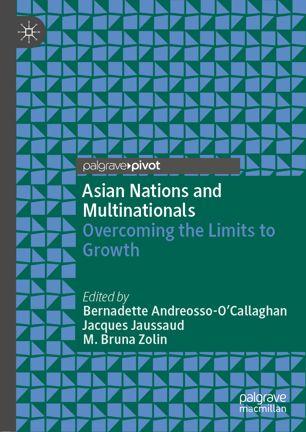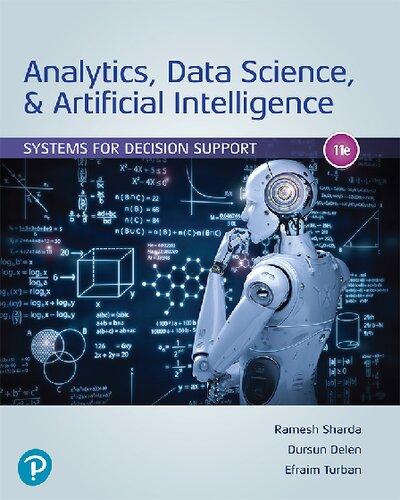Sustainable Development and Energy Transition in Europe and Asia
Edited by
Bernadette Andreosso-O’Callaghan
Sam Dzever
Jacques Jaussaud
Robert Taylor
First published 2020 in Great Britain and the United States by ISTE Ltd and John Wiley & Sons, Inc.
Apart from any fair dealing for the purposes of research or private study, or criticism or review, as permitted under the Copyright, Designs and Patents Act 1988, this publication may only be reproduced, stored or transmitted, in any form or by any means, with the prior permission in writing of the publishers, or in the case of reprographic reproduction in accordance with the terms and licenses issued by the CLA. Enquiries concerning reproduction outside these terms should be sent to the publishers at the undermentioned address:
ISTE Ltd
John Wiley & Sons, Inc.
27-37 St George’s Road 111 River Street London SW19 4EU Hoboken, NJ 07030
UK USA
www.iste.co.uk
www.wiley.com
© ISTE Ltd 2020
The rights of Bernadette Andreosso-O’Callaghan, Sam Dzever, Jacques Jaussaud and Robert Taylor to be identified as the authors of this work have been asserted by them in accordance with the Copyright, Designs and Patents Act 1988.
Library of Congress Control Number: 2019952963
British Library Cataloguing-in-Publication Data
A CIP record for this book is available from the British Library
ISBN 978-1-78630-570-1
Miroslava ZAVADSKA, Lucía MORALES and Bernadette ANDREOSSO-O’CALLAGHAN
2.1.
Chapter 3.
3.1.
3.2.
3.2.1.
3.6.
4.1.
4.2.
4.3.
4.4.
4.5.
4.6.
Chapter
Erja
5.1.
5.2. The EU as a norm promoter in sustainable development
5.3.
5.4. The context of the EU’s
5.5. The
5.5.1.
5.5.2.
5.5.3.
5.6.
5.7.
5.8.
Chapter 6. The Relationship Between Shareholder Value and International Transfer of Environmental Management Practices
Kazuma MURAKAMI and Tatsuo KIMBARA
6.1.
6.2.
6.2.1.
6.2.2.
6.3.
6.3.1.
6.4.
6.5.
6.6.
6.7.
Chapter 7. Global Crisis of Sustainable Development and Global Warming: A Case Analysis
Jasmeet LAMBA, Bhumika GUPTA and Sam DZEVER
7.1.
7.2.
7.3.
viii Sustainable Development and Energy Transition in Europe and Asia
7.4.
7.4.1.
7.5.
7.5.1.
7.5.2.
7.6. The
7.7.
7.8.
7.9.
Chapter 8. Southeast Asian Energy Transformation: Is It Enough and Sustainable?
Lucía MORALES and Bernadette ANDREOSSO-O’CALLAGHAN
8.1.
8.2.
8.3.
8.4.
8.5.
8.6.
Chapter 9. Analyzing the Reasons for the Low Ratio of Female Researchers in Japan: An Exploration of the Issue of Diversity and Sustainability
9.1.
9.2.
9.2.1.
9.2.2.
9.3.
9.3.1.
9.3.2.
9.3.3.
9.3.4.
9.3.5.
9.4.
9.5.
Chapter 10. Sustainable Agricultural Development and Rural Poverty in India ..................... 183
Jasmeet LAMBA, Bhumika GUPTA and Sam DZEVER
10.1. Introduction............................ 184
10.2. Objective and methodology of the research ........ 185
10.3. Review of literature on agricultural development, credit flows, and rural poverty ................... 186
10.4. Pattern of agricultural development in India ....... 187
10.5. Classification of Indian States in context with CIAD and rural poverty ............................ 191
10.6. The model: relationship between agricultural development and rural poverty in India .............. 192
10.7. Suggestions ............................ 194
10.8. References ............................ 194
Chapter 11. European and Chinese Consumers’ Attitude for Food with Reduced Use of Chemicals: Results from a Survey ........................ 197
Martina MAZZAROLO, Giacomo FERRARO, Ilda MANNINO and M. Bruna ZOLIN
11.1. Introduction............................ 198
11.2. Background ............................ 199
11.3. Data and methodology ..................... 201
11.3.1. The sample .......................... 202
11.4. Results ............................... 204
11.4.1. Descriptive analysis on consumers’ behavior on food choice .............................. 205
11.4.2. Regression analysis .................... 207
11.4.3. Descriptive analysis on different patterns of behavior on food choice between European and Chinese respondents .............................. 210
11.5. Discussion and conclusion .................. 212 11.6. References ............................ 213
Conclusion ................................ 217
Bernadette ANDREOSSO-O’CALLAGHAN, Sam DZEVER, Jacques JAUSSAUD and Robert TAYLOR
Sustainable Development and Energy Transition: Introduction and Overview
The book chapters, derived mainly from the revised versions of the papers presented at the 24th International Euro-Asia Research Conference held in Barsac, France, in May 2019, focus on sustainable development and energy transition. In the face of industrial pollution, environmental degradation and resulting climate change in the form of global warming, Western governments – at least partly in response to public protest – have become committed, through international agreements like the Paris Accord, to sustainable development. In contrast, the leaders of developing countries, for example, those of Southeast Asia, have prioritized economic growth, even at the cost of ecological damage, and have only lately become cognizant of environmental cost. The adverse effects of pollution and unrestrained carbon emissions are global, overriding national boundaries, and –accordingly the definition of sustainable development goals – has had to be extended, encompassing factors such as health, education, gender equality, action on climate change, and regional peace and stability, particularly in Asia. Following the implementation of International Health Regulations in 2010 and the submission of reports by subscribing countries, there is, for example, a designated need for a collaborative response to chemical safety and radiological emergencies. Given the challenges presented by migration, for instance, Rohingya refugees from Myanmar, a premium is placed on
Introduction written by Robert TAYLOR.
xii Sustainable Development and Energy Transition in Europe and Asia
the provision of educational opportunities for migrants to ensure their social integration into countries receiving them. Gender equality is crucial in employment, given forms of discrimination against migrant women who are vulnerable to trafficking and gender-based violence. Women may also witness a disproportionate share of unpaid care and domestic work. In addition, given globalization and transnational supply chains, production and consumption in a number of countries may be adversely affected by national disasters, as witnessed in the 2011 Japanese Tohoku earthquake and tsunami [RAJ 19, TRI 19].
The above categories lead to the discussions described below relating to sustainable development policies in China and Southeast Asia. As the world’s second largest economy and the major user of fossil fuels, China’s policy may be seen as providing a template against which approaches in other Asian countries may be judged. China and India, in addition to the United States, may be considered pacesetters in renewable energy development, whereas Southeast Asian states lag behind, even though, as indicated below, the latter have enormous potential for solar, wind, ocean, river, or geothermal energy [MAS 18].
China’s moves to protect the environment have been in response to pressure from both global institutions and local people, incensed by the effect of pollution on health, and this represents a radical departure on the part of the Chinese government which, until recently, saw foreign blandishments as a Western conspiracy to inhibit the country’s economic growth [CLA 17]. In response to public concern, in 2014, Chinese Premier Li Keqiang declared war on pollution and inefficient and blind development, but Chinese policymakers are still mindful of any adverse impact of sustainable developments on economic growth [US 19a].
The following indicates the magnitude of the Chinese task. China burns 47% of the world’s coal, with consequent effect on air quality in Beijing which is surrounded by coal-burning power plants. Similarly, it is estimated that more than half of China’s surface water is so polluted and undrinkable, and 90% of underground water for irrigating farmland is polluted. The increasing demands of agriculture have led to deforestation and desertification, as well as a drop in biodiversity. Even more alarming has been the emergence of the so-called “cancer
villages,” due to chemical and heavy metal pollution. These trends have been exacerbated by increasing middle-class consumer demands, whether for diversified diet, say in the form of beef, as well as by expanded fuel usage for growing car ownership [LAL 13].
Especially since the introduction of reform initiatives by Deng Xiaoping in 1978, a major obstacle faced by Chinese lawmakers has been the local implementation of legislation, following the traditional and often fraught relationship between the central government and the provinces. Specifically, local governments have often been loath to enforce health, safety, and environmental laws, given the need to avoid unemployment and resulting social unrest which potentially threatens social stability. One hidden agenda in the Environmental Protection Tax Law of China being implemented since January 2018 is to provide incentives for local enforcement. The law includes air pollution, water pollution, solid waste, and noise as the four major categories of taxable emissions. The law specifically designates the local tax bureaus as collectors of the new environmental protection tax. Local governments have discretion regarding the tax rate within a range specified by the central government. The whole amount collected will become part of local tax revenue. In addition, the unleashing of local government initiative and responsibility is indicated by the enactment of the Water Pollution Prevention and Control Law to be implemented nationally through the “river chief” system, originally piloted in Jiangsu. In an industrial context, there are increased penalties for breaking the law in the discharge of pollutants [COR 17]. Finally, the Law on the Prevention and Control of Soil Pollution continues the focus on cleaning the environment [ZHA 18a, ZHA 18b]. The above environmental legislation officially makes no distinction between Chinese and foreign companies, with implications additionally for supply chain management [COR 17].
The above discussion regarding the implementation of China’s environmental legislation, including lately a carbon emissions trading scheme being piloted experimentally in several provinces, may be summarized as the remedial action being taken by the Chinese authorities [CLA 17].
The Chinese leaders have, in commitment to the 2015 global accord aimed at curbing temperature rises, pledged to bring down
xiv Sustainable Development and Energy Transition in Europe and Asia
China’s total emissions to a peak around 2030. A Chinese climate experts source, however, claims that this goal will not be achieved unless limits on carbon emissions are included in the forthcoming 2021–2025 Five-Year Plan. According to the source, on a business as usual trajectory, annual CO2 emissions would grow from 11 gigatons in 2020 to 14.3 gigatons in 2030 and would still be rising [US 19b].
Such goals, however, demand not only the kind of remedial action outlined earlier, but also a constructive innovative policy based on renewable energy.
Integral to moves toward the use of renewable sources is an increase in energy efficiency as China moves away from being the world’s workshop, especially for labor-intensive goods, toward an expanding service sector. Avoidance of unnecessary waste will foster a sustainable economy and encourage renewable energy use. Energy efficiency relates not only to consumption of energy, but also its production; the rate of recovery in coal mining is low since much extraction comes from inefficient small-scale coal mines. In line with this focus on efficiency is the emphasis on green energy, a priority of the current 12th Five-Year Plan, as stressed, for instance, in the Renewable Energy Law. An indication of the Chinese lead in renewable energy is research into underlying technology, with the Chinese having a total of 29% of the global patent. China, for example, is the leading country in the world in electricity products from renewable energy resources, double that of the second ranked United States, with renewable power coming mainly from hydroelectricity and wind, such growth being faster than that of fossil fuels and nuclear power capacity. While domestic demand is such that coal-powered plants still satisfy many of China’s energy needs, in 2017, renewable energy represented 36.6% of China’s total installed power capacity and 26.4% of total power generation. The rise in the share of renewable resources in energy is also a national security issue, given the possibility of interception of imports.
China’s investment in renewable resources will now be placed in a global context through invested sectors. In 2007, China accounted for US $126.6 billion or 45% of the global total of US$279.8 billion invested in renewable energy. An example of hydropower development is the Gansu Dang River Hydropower Project, which, in
2007, was registered as a Clean Development Mechanism project in accordance with the requirements of the Kyoto Protocol to the United Nations Framework Convention on Climate Change. More hydropower projects are being approved. Global perspective also reveals China’s production of wind power, with the country being the largest producer after the United States, Germany, and Spain in 2008. There has also been a spin off for industry, with the commercial production of turbines and components. The Chinese government has also created an incentive scheme for the technological development of solar power, with China becoming a world leader in the manufacture of solar photovoltaic technology. While the production of fuel is far more contentious, given global concerns about the competition between corn, both as an energy source and as a food, with the potential for price rises, China has become, like the United States, and Brazil, a major producer of ethanol. Perhaps, geothermal power is more environment-friendly, which has considerable potential in China as an renewable energy resource [DUD 19, WIK ND].
In pursuit of renewable energy objectives, more challenging than green power generation is the fueling of vehicles environmentally because, in China as elsewhere in Asia, with a rising middle class, car ownership is also increasing, with potential for resulting deterioration in air quality. In spite of the current quality issues discussed below, Chinese leaders seek to dominate the global New Energy Vehicles (NEV) industry. Since 2015, the Chinese government has, through subsidies to car makers, battery manufacturers, and vehicle purchasers, supported the industry, prioritizing research and development (R&D) and obtaining technology from foreign joint ventures. Significantly, China’s largest electric vehicle maker is BYD, backed by the American Warren Buffett organization. Additionally, several city authorities have restricted the issue of license plates for traditional cars, thus encouraging drivers to buy electric vehicles. Consequently, in 2018, Chinese manufacturers sold 1,256 million NEVs, mainly electric cars, with China accounting for more than half of such global sales. In June 2019, Chinese government policy changed; subsidies relating to consumer purchasing fell at least 65%, resulting in lower profit margins for manufacturers, the intention being to force automakers to produce better quality electric vehicles. Lack of quality control is indicated by the recall to manufacturers of
xvi Sustainable Development and Energy Transition in Europe and Asia
135,700 electric vehicles in 2018, representing an industry wide rate of 10.8%. Faults include low-quality batteries, motors, and transmission systems. In response, the government’s steps to eliminate subsidies have been designed to restrict the growing number of lowquality entrants to manufacturing. Closely linked is inferior battery performance on the road which can only be remedied by better industrial standards and certification [MIN 19, US 19c].
In addition, Chinese government policy has also sought to support the fledgling hydrogen-powered industry. The newly established Anhui Mingtian Hydrogen Energy Technology Company, for example, manufactures fuel stacks for vehicles powered by the element which produces no emissions from the tail pipe. According to BloombergNEF, the fuel-cell vehicle industry has received more than US $1 billion worth investments from Chinese companies. For the time being, government support for fuel-cell vehicles may well remain, even while subsidies for the electric car industry are being cut [US 19d].
Within this overall context of remedial and constructive innovative action, attention is now turned to Southeast Asia. Current economic and social trends suggest that the states of the region will, even though belatedly, follow a sustainable development trajectory similar to that of China. Energy consumption in Southeast Asia has doubled in the last two decades, with heavy reliance on fossil fuels, especially coal, both for power generation and transportation [IRE 18]. Demand is likely to increase, with an increasing number of middle-class consumers enjoying rising living standards. This has resulted in the greater accumulation of waste. Significantly, individual Southeast Asian countries, like China, have taken steps to limit the importation of waste, Malaysia and Vietnam being examples. Ironically, advanced economies exporting waste are in a much better position to develop environmentally recycling technologies, even though businesses, for instance, in Indonesia, have gained a profitable source of income by such measures [SEM 19].
Although the above has outlined some initiatives by individual Southeast Asian countries, there is a growing acceptance that waste management must proceed at a regional level, an instance being the recently adopted Bangkok Declaration on Combating Marine Debris at the Association of Southeast Nations (ASEAN) Summit in Bangkok
in June 2019. Although the agreement is a major step forward, it does require policy coordination between countries, which often lack proper disposal facilities to curb, say, plastic pollution. Moreover, shared river systems, like that of the Mekong, are the conduits for ocean plastic pollution, land-based activities being a major source of marine debris. One solution is the circular economy model, currently being developed by Singapore and Thailand, through which the disposal of waste and the need for raw materials is lessened by implanting the system of reduce, reuse, recycle, refurbish, and remanufacture in the production, distribution, and consumption processes [TRA 19].
Although remedial measures are crucial in the short term, in the long run the key lies in the development of sustainable energy sources. In fact, Southeast Asia’s renewable energy potential is still largely untapped. This potential was implicitly acknowledged in the establishment of the ASEAN Centre for Sustainable Development (ACSDSD) in Thailand, signaling growing cooperation among regional countries [PIT 19].
Although there is still a greater need for policy coordination at a regional level, national initiatives have led to cumulative investment in renewable energy amounting to US$27 billion between 2006 and 2016 [IRE 18]. It is realized at regional levels that energy demand now exceeds supply and, given environmental degradation, renewable resources are the preferred sources to reduce greenhouse gas emissions, lest future economic and social development be impeded. Importantly, energy demand has increased by 60% in Southeast Asian countries in the last 15 years, challenging the availability of existing energy resources, especially in relation to the dominant transportation sector. Most Southeast Asian countries remain heavily dependent on fossil fuels for energy needs, but national governments are seeking to develop environment-friendly energy sources through incentives and carbon taxes. ASEAN has agreed on a 23% target for sustainable renewable resources by 2025. The following national examples will briefly illustrate progress to date. In Indonesia, the government’s target is the achievement of optimal energy use nationally by 2025, the objective being to reduce dependency on oil, gas, and coal which are in danger of not coping with future demand. Similarly, the Philippine
xviii Sustainable Development and Energy Transition in Europe and Asia
government has introduced legislation to promote the use of renewable energy by developing resources and organizing management to support policy implementation. Singapore, a regional pacesetter in many policy areas, has a strategy to achieve efficient renewable energy, with the aim of reducing emissions at the business as usual level between 7% and 11% by 2020. Likewise, the Vietnamese have a target to increase the share of renewable energy by 5% in 2020, with an estimated increase of 11% in 2050. Malaysia’s policy is to achieve 5% renewable energy use for nationwide electrical energy needs by 2030. The Malaysian authorities are instigating surveillance concerning marine energy potential. Lastly, to promote energy conservation, the Thai government has a target of 3%–5% renewable energy use for all power-generation capacity projects. Geothermal and marine energy have also been slated as renewable energy sources in Thailand.
In summary, these targets, while presenting challenges, also offer opportunities. Policies require investors who may reap substantial returns. The development of renewable resources locally may not only help to ensure local control over energy supply, but also provide employment through job creation, with attendant revenue generation.
Nevertheless, national subsidies for fossil fuels and slow implementation of supporting policies in individual countries as yet preclude regionally integrated commitment to sustainable development. The large-scale development of renewable resources may be furthered through national and regional measures. National governments can target a long-term energy mix including renewable resources. In the implementation of energy policies in individual countries, incentives are crucial for financing the development of renewable resources and involve financial policy instruments. Exchange of information and expertise between states to enforce sustainable energy standards is also necessary. The expansion of the ASEAN Power Grid will link the energy resource endowments in the region as a whole [ERD 19].
Concluding remarks
In conclusion, this overview serves as an introduction to the general rubric of sustainable development and energy transition,
discussed in the following chapters. The leaders of China, still often categorized as a developing country, have, in recent decades, become increasingly aware of the adverse environmental effects of unfettered economic growth. Accordingly, under pressure from global institutions and in the face of domestic public opinion incensed by the damage done to health, the Chinese authorities have taken remedial action to stem, for example, the harm caused by air and water pollution as well as by the effects of deforestation and desertification. A major problem, however, is local implementation, given the regional government’s fear that strict enforcement will affect employment and result in social unrest. Changes in tax laws have, however, been designed as incentives for local authorities.
The above constitutes the remedial action. Reducing the effects of climate change and global warming demands more affirmative action in the form of a constructive innovative policy based on renewable energy, with priority given, for instance, to the development of electric vehicles, hydroelectricity, and wind and solar power. Given that carbon emissions in transportation are a cause of global warming, the Chinese leaders have sought domination of the electric vehicles industry, even though there are quality issues.
The Chinese approach may serve as a template for Southeast Asian countries which are still heavily reliant on fossil fuels, given demand from increasingly affluent middle-class consumers. Although there are initiatives by individual countries, the key to successful remedial waste management may well best proceed at a regional level; river systems like the Mekong are conduits for ocean-based pollution. Because of heavy dependence to date on fossil fuels, some Southeast Asian countries have targeted the development of, for instance, geothermal and marine energy sources.
Regionally integrated commitment to sustainable development via renewable resources has been hindered by national subsidies for fossil fuels and ineffective supporting policies in individual Asian states. Exchange of expertise between states and the expansion of the ASEAN Power Grid will further regional-level coordination.
The chapters in this volume offer a wide-ranging perspective relating to sustainable development and energy transition in Asia. The
and Asia
Chinese case is examined in Chapters 2 and 3. In particular, Chapter 2 investigates China’s coal dependency by looking at the short- to medium-run dynamics existing between coal price volatility and sectoral stock exchange performance. Chapter 3 discusses the steps that the Chinese government is taking in order to implement a clean energy strategy with the idea of “ecological civilization” in mind. Energy transformation and the move toward a sustainable green energy sector are also issues dealt with in Chapter 8 which considers the case of Southeast Asian countries. Chapter 7, focusing on Indonesia and Laos, analyzes the effects of the rapid expansion of palm oil production in both countries.
The notion of “ecological economics” is also explained and developed in Chapter 4 in the context of urban logistics in the case of Japan. The international dimension of sustainable development is covered in Chapter 5 which investigates whether the recent EU–Japan free trade area (FTA) can be regarded as a norm-setter regarding sustainable development issues in the future FTAs that the EU will/might sign with other countries in Asia. Chapters 1 and 9 deal with a socioeconomic issue of sustainable development, namely the role of women in economic growth: Chapter 1 from the perspective of microfinance in Vietnam and Chapter 9 from the viewpoint of female researchers in Japan. Chapter 6 provides an analysis of the relationship between shareholder value within multinational firms and the international transfer of environmental management practices. Finally, the central issue of food and agricultural development is explored in Chapters 10 and 11. Chapter 10 is devoted to sustainable agricultural development and rural poverty in India, whereas Chapter 11 is on consumers’ attitudes toward food products containing a low level of chemicals in China when compared to the EU.
References
[CLA 17] CLARK A., “Opinion beyond brics. China’s environmental clean-up to have big impact on industry”, Financial Times, May 22, 2017.
[COR 17] CORNE P., BROWAEYS J., “China cleans up its act on environmental enforcement”, The Diplomat, December 9, 2017.
Introduction xxi
[DUD 19] DUDLEY D., “China is set to become the world’s renewable energy superpower, according to new report”, Forbes, available at: www. forbes.com/sites/2019/01/11 [accessed August 24, 2019], January 11, 2019.
[ERD 19] ERDIWANSYAH, MAMAT R., SANI M.S.M., et al., “Renewable energy in Southeast Asia: policies and recommendations”, Science of the Total Environment, vol. 670, pp. 1095–1102, 2019.
[IRE 18] IRENA AGENCY PUBLICATION, Renewable energy market analysis: Southeast Asia [accessed August 24, 2019], 2018.
[LAL 13] LALLANILLA M., “China’s top 6 environmental concerns”, Expi CHO Thermo Fisher Scientific, available at: http://irena.org/publications/ 2018/Jan/RenewableEnergy MarketAnalysisinSoutheastAsia, 2013.
[MAS 18] MASLOG C., “ASEAN countries lag on renewable energy”, SciDEVNet, July 30, available at: https:www.scidev.net/asia-pacific/energy/ columns/aseancountrieslagonrenewables, 2018.
[MIN 19] MINTER A., “Electric car fires in China should set off alarms”, Bloomberg, L.P., March 20, 2019.
[PIT 19] PITAKDUMRONGKIT K., 34th ASEAN Summit and Thailand: headway or uncertainty? Rajaratnam School of International Studies (RSIS) Commentary No. 133/2019, July 3, 2019.
[RAJ 19] Rajaratnam School of International Studies (RSIS) NTS Bulletin, The final countdown – ten years to achieve the sustainable development goals [accessed August 22, 2019], available at: https:mail.google.com/mail/ u/o?ik=b6fa8ceda&view=pt&search=all & permthid=thr, 2019.
[SEM 19] SEMBIRING M., Global waste trade chaos: rising environmentalism or cost–benefit analysis? Rajaratnam School of International Studies (RSIS) NTS Insight, No. IN19-02, July 2019.
[TRA 19] TRAJANO J., GONG L., Combating marine debris: what after the Bangkok declaration? Rajaratnam School of International Studies (RSIS) Commentary No. 136/2019, July 8, 2019.
[TRI 19] TRIAS A.P.L., Managing disasters 4.0: need for new thinking, Rajaratnam School of International Studies (RSIS) Commentary, No. 166/2019, August 23, 2019.
[US 19a] US-China Trade Council News Overview, “China has made major progress on air pollution: Wuhan protests show there is still a long way to go”, CNN, July 11, 2019.
[US 19b] US-China Trade Council News Overview, “China’s government think tank presses for 2025 CO2 cap”, Reuters, August 14, 2019.
xxii Sustainable Development and Energy Transition in Europe and Asia
[US 19c] US-China Trade Council News Overview, “Electric vehicles run into China’s regulatory change”, WSJ, August 22, 2019.
[US 19d] US-China Trade Council News Overview, August 23, 2019.
[WIK ND] Wikipedia, Renewable energy in China, available at: en.wikipedia. org/wiki [accessed August 24, 2019], n.d.
[ZHA 18a] ZHANG J.Q., “Two new environmental laws to go into effect in 2018”, available at: China.org.cn, January 1, 2018.
[ZHA 18b] ZHANG Z.Y., New laws in China to impact business, trade from January 1, 2019, available at: www.china-briefing.com/, 2018.













